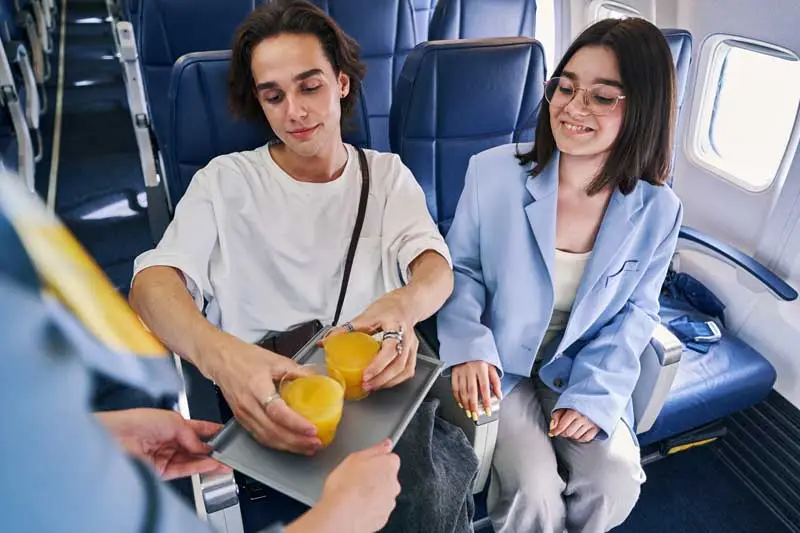The Evolution of Airline Food: From Mystery Meat to Culinary Innovation
Airline food has long been the subject of jokes and complaints among travellers, but in recent years, there has been a significant shift in both the quality and variety of inflight meals. This transformation can be attributed to advancements in technology, changes in consumer preferences, and a growing focus on sustainability.
Technology in Meal Preparation
One of the most significant advancements in airline food technology is the introduction of high-tech ovens and appliances designed specifically for use in aircraft galleys. These ovens are capable of cooking meals at high altitudes, where air pressure is significantly lower than at sea level. This technology ensures that food is cooked evenly and to the desired level of doneness, resulting in a more enjoyable dining experience for passengers.
Additionally, airlines are increasingly using automation and robotics to streamline meal preparation processes. Automated food assembly lines can efficiently package individual meal components, such as entrees, sides, and desserts, reducing human error and improving consistency. Robotics are also being utilised for tasks such as food portioning and plating, further enhancing efficiency and quality control.
Innovations in Menu Development
Advancements in food science and culinary techniques have enabled airlines to offer a wider range of menu options to cater to diverse dietary preferences and restrictions. From plant-based meals to gluten-free and dairy-free options, airlines are working to accommodate the needs of all passengers.
Furthermore, airlines are collaborating with renowned chefs and culinary experts to create inflight menus that rival those of top restaurants. These chefs use their expertise to develop recipes that are not only delicious but also suitable for consumption at high altitudes. By incorporating fresh, locally sourced ingredients whenever possible, airlines are able to offer meals that are both flavourful and sustainable.
Personalisation and Customisation
Technology has also made it easier for airlines to personalise the inflight dining experience for passengers. Through pre-ordering systems and mobile apps, travellers can specify their meal preferences in advance, ensuring that they receive a meal that meets their dietary needs and preferences. This level of customisation enhances passenger satisfaction and reduces food waste by minimising the number of unused meals.
In addition to pre-ordering, airlines are exploring the use of biometric data and artificial intelligence to tailor meal offerings to individual passengers. By analysing factors such as past meal choices, dietary restrictions, and even mood indicators, airlines can suggest meal options that are likely to appeal to each passenger, creating a more personalised and enjoyable inflight dining experience.
Sustainability and Environmental Considerations
As concerns about environmental sustainability continue to grow, airlines are taking steps to reduce their carbon footprint and minimise waste in inflight catering operations. This includes efforts to source ingredients from sustainable suppliers, minimise packaging waste, and explore alternative food production methods, such as lab-grown meat.
Furthermore, advancements in food preservation and packaging technology have enabled airlines to extend the shelf life of inflight meals without the need for preservatives or additives. Vacuum sealing and modified atmosphere packaging help to maintain the freshness and quality of food during long flights, reducing food waste and environmental impact.
The evolution of airline food reflects broader trends in technology, consumer preferences, and sustainability. Thanks to advancements in meal preparation technology, menu development, and personalisation, passengers today have access to a wider range of high-quality inflight dining options than ever before. As airlines continue to innovate and adapt to changing demands, the future of airline food looks promising, with an emphasis on quality, variety, and sustainability.



